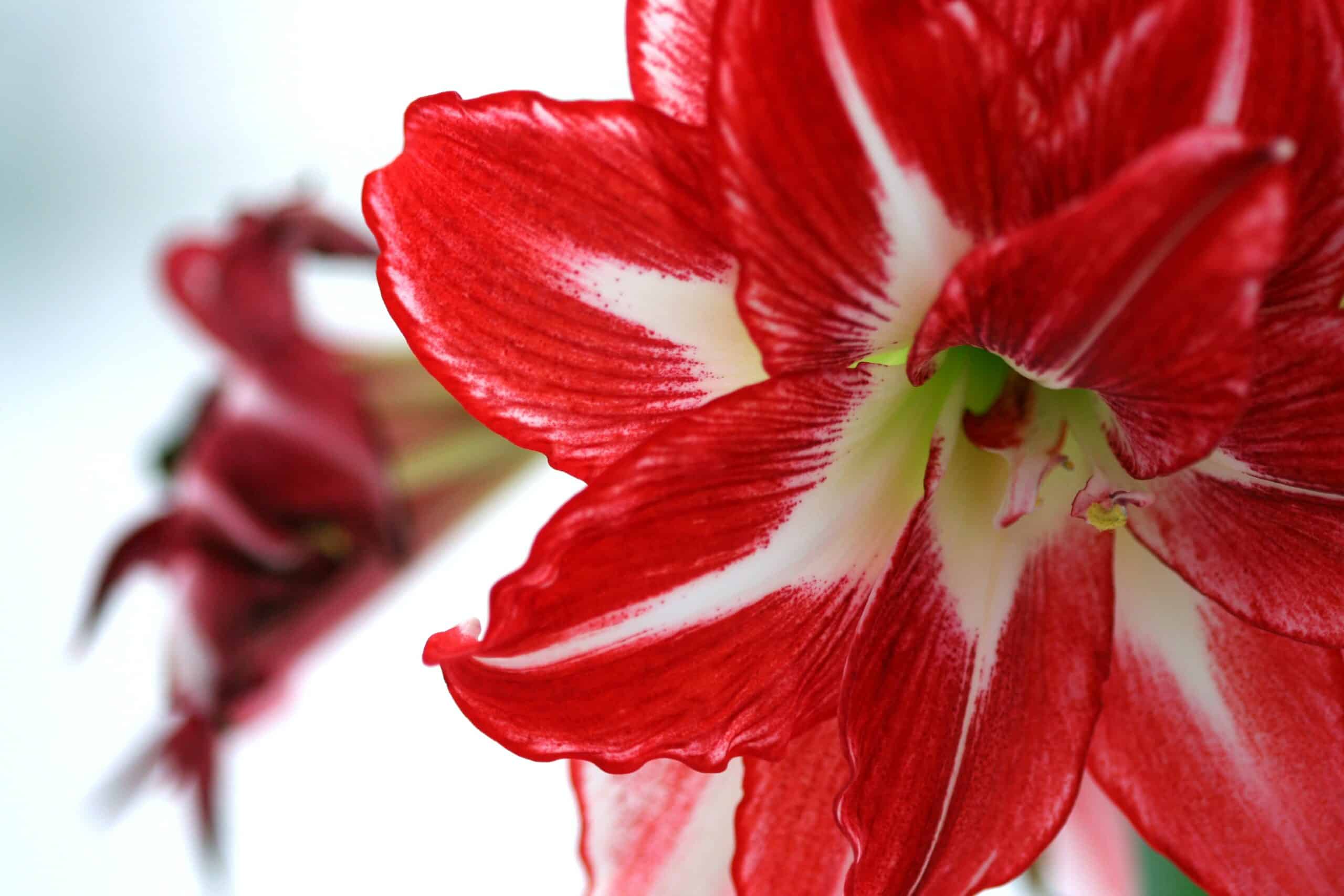Amaryllis flowers are a beautiful symbol of strength and resilience, blooming in even the darkest of times. These vibrant, long-lasting blooms can bring life to any space and make a wonderful addition to your garden. With the right care, you can keep these beautiful blossoms year-round.
As an experienced botanist and gardener, I know just how rewarding growing amaryllis flowers can be. With proper knowledge and care, these flowers will last for years with minimal effort on your part. In this article, I will discuss all aspects of caring for amaryllis flowers so you can enjoy their beauty throughout the year.
From soil selection to watering techniques, I will provide all the information needed to keep your amaryllis in top condition. With my expertise in botany and gardening, you can rest assured that you’re getting reliable advice about what it takes to make your amaryllis thrive. Whether you’re a beginner or have been tending these flowers for years, this guide is sure to provide valuable insight into how best to tend them year-round.
What Are Amaryllis Flowers?
What a coincidence! Today I’m talking about the beautiful Amaryllis flower. It might be one of the most popular winter plants, but it can also be cared for year-round with just a few simple steps. As a botanist and gardener, I’d like to share my expert insight into this magnificent flower.
Amaryllis is an exotic bulbous plant that produces large vibrant flowers in shades of red, pink, orange and white. Its leaves are strap-like and thick at the base, often reaching up to 12 inches in length. The flowers themselves can reach up to eight inches in diameter when fully grown and bloom on long stalks that can reach up to three feet tall! With so much size and color packed into such a small package, it’s no wonder why they’re so sought after!
Caring for amaryllis properly throughout the year means understanding its needs. Watering should be done moderately but consistently: too little water will cause the bulbs to wilt and too much will rot them. Bright light is also essential for healthy growth – direct sunlight is best avoided but an indirect source like a south facing window should work fine. You should also remember to fertilize every two weeks during its growing season (usually April through October). By following these simple guidelines your amaryllis will stay looking its best all year round!
And now that we know how to care for them, let’s focus on choosing the best bulbs – that way you’ll ensure success right from the start!
Choosing The Best Amaryllis Bulbs
Choosing the best amaryllis bulbs requires some investigative work. First, take a look at the size of the bulb – bigger is better in this case, as larger bulbs have more ample energy stores to fuel their growth and flower production. Bulbs should be firm and free of discoloration or soft spots, which can indicate disease or rot. Make sure any bulbs you purchase are labeled as “dormant” – this means that they are ready to be planted and will come alive when given the right care.
When it comes to purchasing your amaryllis bulbs, opt for those labeled “Dutch-grown” or “florist-grade” – these are higher quality than what you might find elsewhere and will produce bigger blooms. Additionally, select hybrids with multiple colors for a stunning display of flowers in your garden.
When shopping for amaryllis bulbs, it’s important to do your research so that you can choose the best ones for your needs. Read up on the different varieties available and inspect each bulb closely before making a purchase – only buy ones that look healthy and have plenty of potential for growing beautiful flowers. With careful selection and proper care, your amaryllis will reward you with an abundance of vibrant blooms for years to come!
Planting Your Amaryllis Bulbs
Planting your amaryllis bulbs is an essential step in ensuring that you get the most from these beautiful flowers. With a few tips and tricks, you can have them looking their best for years to come. Here are three key steps to keep in mind when planting your amaryllis bulbs:
First, begin by preparing the soil. You’ll want to use a loose, well-draining soil mix that is rich in organic matter. Add some fertilizer to the mix as well – this will help ensure that the bulb gets all of the nutrients it needs to thrive. Make sure that you prepare enough soil for each bulb – they prefer plenty of room around them as they grow.
Next, it’s time to plant your bulbs. Start by digging a hole that’s twice as deep as the size of your bulb; then, fill it with the prepared soil mix and place the bulb on top. Gently cover the bulb with more soil and press down gently; be sure not to compact it too much – this could prevent proper root growth. Give each bulb a good watering after planting, but don’t overdo it!
Finally, when selecting a location for your amaryllis bulbs, look for an area that receives bright indirect sunlight or filtered sunlight throughout most of the day; avoid direct afternoon sun if possible. Additionally, make sure that you give your amaryllis plants enough space between them so they can grow happily without crowding each other out. Now you’re ready to start enjoying your beautiful amaryllis blooms!
Location And Soil Requirements
Location and soil requirements are the building blocks of successful amaryllis care. As the old saying goes, ‘the right plant in the right place’. Understanding how to create the optimal environment for your amaryllis will ensure your flowers will blossom with full beauty year-round. Like a sculptor shaping clay, so too must we shape our environment to support our beloved blooms.
When seeking a location for your amaryllis, look for spots that provide bright but indirect light throughout the day. Also keep in mind that, just like people, these plants need some privacy during their time of rest, so avoid direct sunlight or drafts from windows and doors. Temperature is also important; amaryllises prefer moderate temperatures between 60 and 70 degrees Fahrenheit.
To achieve success with amaryllis care, it’s essential to choose an appropriate soil as well. Select a potting mixture that drains easily but retains moisture – one part peat moss to one part garden loam or perlite works best. Be sure to check drainage holes at the bottom of the pot before adding soil; if necessary, use small stones or clay pellets to facilitate drainage and prevent waterlogging. With these considerations in mind, you’re ready to start creating an oasis that will nurture your amaryllises year-round!
Watering And Fertilizing
Summoning up the life-giving moisture that sustains amaryllis year-round, watering and fertilizing is a crucial step in the process of caring for these stunning flowers. Like an oasis in the desert, it’s an oasis of nourishment that will ensure your amaryllis flourish with abundant blooms. To provide this vital resource to your plants, here are some tips to get you started:
First, let’s focus on watering. Be sure to always check the soil before you water – if it’s dry up to about a finger deep, then it’s time for a drink. When you do water your plant, use lukewarm water and give it a good soak. Make sure there are no standing puddles for long – especially in winter – as this can lead to rot or other fungal issues.
Now onto fertilizing. Amaryllis plants benefit from regular fertilizer applications during their growing season (generally spring through summer). Use a standard liquid fertilizer according to package instructions but reduce frequency once buds form. During winter dormancy, you don’t need to feed them at all! Just be sure not to over-fertilize as this can burn the roots and harm the plant.
To maximize your amaryllis’ growth and keep them healthy throughout all seasons of their lives, controlling temperature and humidity levels is essential. Tune in next time for more tips on keeping your beautiful flowers thriving!
Controlling Temperature And Humidity
Romancing the right temperature and humidity is essential for amaryllis to thrive. Temperature and humidity play a pivotal part in keeping these florid flowers fresh and fragrant. To ensure their continued growth, gardeners must contend with controlling their environment carefully.
Temperature is a crucial component for caring for amaryllis plants. A space that is too warm will cause leaves to yellow and flower stalks to weaken, while a place that is too cold will bring about buds that are stunted or fail altogether. The ideal temperature range is between 65-75 degrees Fahrenheit during the day, with a drop of 10-15 degrees at night. Additionally, keep the bulbs away from direct sunlight or heat sources such as heating vents or fireplaces.
Humidity also plays an important role in keeping amaryllis healthy. If the air is too dry, leaves may become brittle and browned by dehydration; on the other hand, overly wet conditions can lead to rot and fungal problems such as root rot. To maintain adequate humidity levels, consider running a humidifier near the plant or misting it lightly once every two days. Placing pebbles in a tray filled with water beneath its container can also help create a more humid atmosphere around it.
Properly controlling temperature and humidity will help guarantee that your amaryllis remains in bloom all year long! With just a few minor adjustments to its environment, you can guarantee its longevity and beauty throughout the seasons.
Storing And Replanting Amaryllis Bulbs
Storing and replanting amaryllis bulbs is an important part of keeping them healthy and vibrant. After the blooms have faded, it’s time to start preparing for the next season. Properly storing and replanting the bulbs will ensure that they remain strong and bloom again year after year.
First, we’ll need to begin by cutting back the foliage when it yellows or turns brown. This should be done about six weeks after flowering has ended. The bulb can then be stored in a cool, dry place until planting time arrives. During this period, there should be no watering or fertilizing of the bulb as it needs to go dormant in order to survive its winter dormancy period.
When the time comes to replant the bulb, it can either be put into fresh potting soil or repotted in its existing container. If you choose to repot, make sure that you select a container that is larger than the original so that there is plenty of room for growth throughout the season. Additionally, make sure to use a well-draining potting mix that is specifically formulated for amaryllis plants as this will help provide them with all their necessary nutrients during their growing season. With proper care and attention, your amaryllis plant should continue to put on beautiful displays of blooms throughout the years!
Next up we’ll discuss how pruning and deadheading these flowers can help keep them looking their best!
Pruning And Deadheading Amaryllis Flowers
Pruning and deadheading amaryllis flowers is an important part of keeping your blooms looking their best. After the flowers on the stem have faded, it’s time to snip them off. This will help encourage the plant to put energy into further flowering rather than seed production. Additionally, pruning can be done to promote air circulation in order to prevent disease from developing.
To begin, use sharp scissors or pruners to cut off spent blooms at their base. It’s also beneficial to remove any thin or weak stems that are not producing blooms for a better shape and beauty of the flower. Taking these steps will ensure that your amaryllis plants remain healthy and vibrant:
• Deadhead: Removing faded blooms helps induce more flowering and reduces disease risk by promoting air circulation. • Prune: Cut away thin or weak stems that are not producing flowers for a better shape and appearance of the bloom. • Dispose: Dispose of deadheaded blossoms immediately after clipping as they may still contain spores of fungal diseases like botrytis blight or mildews that can spread quickly and affect other plants in the garden.
It is also essential to inspect your amaryllis plants regularly for common pests such as aphids, mealybugs, mites, thrips, and whiteflies which can cause damage if left untreated. Taking proper precautions and swift action against these pests is key for keeping your flowers looking their best year-round!
Dealing With Common Pests And Diseases
When it comes to dealing with pests and diseases, some gardeners may assume that amaryllis plants are too delicate for such problems. However, as long as the plants are cared for properly and kept healthy, they can usually ward off any potential pests or illnesses.
As a specialist in botany and gardening, I understand the importance of knowing how to handle common pests and diseases that can affect your amaryllis plants. It is essential to be able to recognize the signs of a pest infestation or an illness so that you can take appropriate action to prevent further damage. Common pests include aphids, mites, thrips, spider mites, mealybugs, and whiteflies. Diseases such as bacterial wilt and leaf spot can also affect the plant’s health if not treated promptly.
You should also be on the lookout for slugs and snails, which are particularly fond of young amaryllis plants. To protect your plants from these hungry critters, you can use slug bait or set up barriers around your garden beds. Additionally, making sure there is good airflow around your plants will help discourage fungal growth which is often associated with these pests.
Taking these steps now will ensure that your amaryllis flowers stay healthy throughout the year! With proper care and attention, you can propagate new amaryllis plants from cuttings taken from existing ones so that you can enjoy their beauty for years to come.
Propagating Amaryllis Plants
Propagating amaryllis plants is a great way to have an abundance of beautiful flowers throughout the year. It can seem daunting, but with some basic knowledge and a little practice, you’ll be able to propagate your plants with ease.
The first step in propagating amaryllis plants is to carefully remove the offsets from the mother plant. When selecting offsets for propagation, look for ones that are about 3 inches in diameter and have several healthy leaves growing from them. After removing the offset, let it sit at room temperature for a few days so that the wound can heal.
Once the wound has healed, you can then pot up your new amaryllis plant. Fill the new pot or container with a well-draining soil and make sure that there is adequate drainage holes in the bottom of the container before planting. Once potted up, place your new amaryllis in an area where it will receive bright, indirect light and keep it watered regularly during its first season of growth. With proper care, you should have a fully grown amaryllis ready to bloom within 6 to 8 months.
Propagation is an easy way to expand your collection of beautiful blooms without having to purchase additional bulbs each year. With just a few simple steps and some patience, you’ll soon be rewarded with a stunning display of vibrant amaryllis flowers.
Different Types Of Amaryllis Flowers
Amaryllis flowers are a beautiful, eye-catching addition to any garden. They come in a variety of different colors and shapes, making them perfect for adding vibrancy and texture to any space. There are many different types of amaryllis flowers that you can choose from, each with its own unique characteristics. This article will explore some of the more popular varieties and what makes them special.
The first type of amaryllis flower is the ‘Vittata. This variety has large, showy blooms with crisp white edges and deeper centers. It’s a stunning addition to any garden that brings both beauty and elegance. Another popular variety is the ‘Apple Blossom’. This variety has large pinkish-white blooms with deeply veined petals that give the flowers an amazing depth of color. The third type of amaryllis flower is the ‘Alba Splendens. This variety has creamy white petals with bright pinkish red markings in their centers. It’s an elegant flower that adds a touch of class to any garden setting.
Finally, we have the ‘Triumphator’. This variety features fragrant white blooms with deep red markings in their centers. It’s an exquisite flower that will add a hint of intrigue to your garden or patio area. With so many types of amaryllis flowers available, it’s easy to find one that fits your needs and preferences perfectly! No matter which type you decide on, these gorgeous plants will add beauty and interest to your landscape or container gardening efforts for years to come.
Amaryllis Bulb Gift Ideas
It is believed that giving an amaryllis bulb as a gift can bring joy to the recipient and even more so if it blooms. But, how do you make sure the amaryllis lasts year-round? As a specialist in botany and gardening, I’m here to tell you that, with proper care and attention, an amaryllis bulb can be the ideal present for any occasion.
There are 11 different types of amaryllis flowers one could choose from when looking for the perfect gift. Each type has its own unique characteristics, whether in terms of color or shape. Moreover, when choosing an amaryllis bulb as a gift, it’s important to know what kind of care is needed for its long-term health and longevity.
One great way to ensure an amaryllis bulb will last year-round is by selecting a variety that fits your giftee’s lifestyle. For instance, those who live in warmer climates may opt for an exotic species like the Zephyranthes candida while those in colder regions may prefer a hardy variety such as Amaryllis belladonna. Additionally, consider gifting accessories such as decorative pots or containers specifically designed for optimal drainage and air circulation around the bulb. With these tips in mind, you can give your loved one a gift that will bloom and bloom again for many years to come.
Creating A Beautiful Amaryllis Display
Creating a beautiful amaryllis display is a rewarding task. Take the example of Maria, who transformed her living room with a stunning amaryllis centerpiece. She started by carefully selecting from different colors and varieties of amaryllis bulbs, then arranging them in a tall glass vase with water. Next, she added colorful stones to the base of the vase for extra depth and texture. The result was an eye-catching yet elegant display that is sure to be enjoyed for years to come.
To create your own masterpiece, it’s important to understand how best to care for your amaryllis bulbs throughout the year. Start by selecting bulbs that are firm and plump – they should have no signs of mold or damage. Plant them in well-draining soil and keep them moist, but not soggy. Make sure they get plenty of light and fertilize regularly with a balanced fertilizer to promote healthy growth and bloom production.
With proper care, you can enjoy your display for many months at a time. When blooms start to fade, simply remove them from the stem and allow the foliage to continue growing until it dies back naturally – this will help ensure that your bulbs continue producing more flowers season after season. As you become more experienced in caring for amaryllis flowers year-round, you’ll discover just how easy it is to create a beautiful display that adds life and beauty to any space. With these tips in mind, let’s move on to decorating with amaryllis bulbs!
Decorating With Amaryllis Bulbs
Decorating with amaryllis bulbs is a great way to bring the beauty of these lovely flowers into your home year-round. Take the example of Mrs. Smith, who planted an amaryllis bulb in her garden during the spring and was able to enjoy its beauty until late fall. As winter came, she wanted to continue enjoying her amaryllis and decided to bring it indoors where she could easily decorate with it.
To decorate with her amaryllis, Mrs. Smith placed it in a pot that was the right size for the flower so that it could be displayed properly. She then chose another pot or container that had drainage holes for water and filled it with soil before adding her amaryllis bulb. This allowed her to create a beautiful arrangement that was both eye-catching and easy to maintain throughout the year.
Mrs. Smith also added some additional foliage and decorations around her amaryllis bulb to complete the look. She used pieces of dried twigs, small branches, stones or pebbles and other decorative items to give her display a natural feel that complemented the flower perfectly. By taking special care with her display, Mrs. Smith was able to enjoy her amaryllis all year long without having to worry about any extra maintenance or upkeep!
Enjoying Your Amaryllis Flowers Year-Round
Witnessing the beauty of amaryllis flowers in full bloom is a sight to behold. As if a painter’s brush has been used to splatter color across their petals, they truly take your breath away. Through the right care and attention, you can enjoy these gorgeous blooms year-round:
- Keep the soil moist but not soggy – Water when the soil feels dry to the touch and never allow water to collect in the pot’s tray.
- Place in a sunny spot – Amaryllis need sunlight for at least 6 hours per day to bloom again next year. • Environment:
- Temperature – The ideal temperature range for amaryllis plants is between 55 and 70 degrees Fahrenheit (12-21 degrees Celsius).
- Humidity – They also prefer high humidity levels, so misting them once or twice weekly is beneficial.
With these simple steps, you can maintain an environment that encourages strong growth and spectacular flowers from your amaryllis plants all year long! Pruning their stems after flowering will also help them conserve energy for the next season’s growth, making it easier for them to bloom again come springtime.
As an experienced botanist or gardener will know, proper care of amaryllis plants can lead to years of enjoyment from these magnificent blooms! Using these tips will ensure that you can have gorgeous flowers throughout each season without having to worry about keeping them alive in between cycles.
Frequently Asked Questions
How Often Should I Water And Fertilize My Amaryllis?
It’s no surprise that amaryllis flowers are incredibly popular; they boast some of the most vibrant and beautiful blooms you’ll ever see. But if you want to ensure you get to enjoy their beauty year-round, understanding how to properly care for them is essential. Let’s take a look at how often you should be watering and fertilizing your amaryllis plants.
When it comes to watering, consistency is key. Be sure to keep soil moist at all times by providing your amaryllis with about an inch of water each week. To make sure your plants get the right amount of hydration, use a moisture meter or simply stick your finger into the soil up to the first knuckle – if it feels dry, it’s time for more water! Additionally, consider adding a layer of mulch around your plants in order to help retain moisture and reduce the number of waterings needed each week.
Fertilizing is also important for keeping your amaryllis healthy and strong. It’s recommended that you feed your plants once every two weeks using a fertilizer specifically designed for bulbs. When applying fertilizer, do so lightly around the base of the plant in order to avoid burning its roots. Here are some tips on caring for your amaryllis: •tWater weekly by providing an inch of water •tCheck soil moisture regularly with a moisture meter or finger test •tAdd a layer of mulch around plant base •tFeed with bulb fertilizer once every two weeks
By following these simple steps, you can ensure that your amaryllis will stay healthy and vibrant year-round! With proper care and attention, these stunning flowers will bring joy and beauty into any home or garden space.
How Do I Store Amaryllis Bulbs Over The Winter?
It may seem ironic that the beauty of amaryllis flowers can be preserved for many years, yet the process of storing their bulbs requires diligent care and preparation. But with a few simple steps and some expert advice, anyone can easily store their amaryllis bulbs over the winter to ensure continued blooms from year to year.
As a specialist in botany and gardening, I believe the most important step in preserving your amaryllis bulbs is to stop watering them about 8-10 weeks before your expected frost date. This will allow the foliage to die back naturally and prepare the bulb for dormancy. Once this has happened, it’s time to dig up the bulbs, carefully remove any excess soil, and inspect them for signs of disease or damage. Then simply place them in a cool, dry area with plenty of ventilation until it’s time to replant them again in spring.
Providing your amaryllis bulbs with proper storage is a great way to serve others by ensuring they are cared for properly. If stored correctly, they should remain healthy and ready to bloom once planted outdoors or indoors again in early spring. This will provide you with long-lasting enjoyment all season long!
What Is The Best Way To Propagate Amaryllis Plants?
The best way to propagate amaryllis plants is by dividing the bulbs. It’s a simple process that can reap you many benefits, and it’s something of a no-brainer. To put it in idiom, you’re killing two birds with one stone – growing more flowers while also ensuring they continue to thrive!
When dividing the bulbs, make sure to use a clean, sharp knife to separate them into individual sections. Each section should contain at least one healthy bud and some roots for the plant to take hold in its new environment. It’s best to wait until late summer or early fall when temperatures are milder for this task.
Once the divisions are complete, replant each section in fresh soil that has been amended with peat moss or compost. Water thoroughly and keep them in a bright spot indoors until temperatures cool off outside. Once they’ve settled in their new homes, they’ll come back strong year after year with proper care and occasional division as needed.
This is an easy way to ensure your amaryllis plants remain vibrant and healthy over time – there’s no reason not to give it a try!
How Can I Get My Amaryllis To Bloom Again?
When it comes to amaryllis, getting them to bloom again is not as difficult as it may seem. With the right care and attention, you can ensure that your amaryllis blooms year after year. Here are some tips to help you get your amaryllis to bloom again.
First and foremost, make sure that your amaryllis has plenty of sunlight. Amaryllis need at least six hours of direct sunlight each day in order to thrive and be able to flower repeatedly. If the sunlight is too low or non-existent, then the plant will not have enough energy stored up to produce its beautiful flowers.
Second, provide adequate moisture for your amaryllis plant. They require regular watering during their growing season which is typically from late winter through early summer every year. The frequency of watering depends on how quickly the topsoil dries out but aim for about once a week with a light sprinkle when you water it. Additionally, keep an eye on the soil for signs of drying out between waterings so that you can adjust accordingly if needed.
Finally, fertilize your amaryllis regularly throughout the growing season with a balanced fertilizer such as 10-10-10 or something similar. This will help ensure that the plant is receiving all of the nutrients that it needs in order to stay healthy and produce vibrant blooms year after year. Be sure to follow package instructions carefully when applying any type of fertilizer so as not to damage or burn your plant’s roots. With these tips in mind, you should be able to enjoy beautiful blooms from your amaryllis plants each and every season!
What Temperature And Humidity Levels Should I Maintain For My Amaryllis?
Amaryllis flowers, also known as belladonna lilies, are an easy to care for plant that can bring beautiful blooms all year round. Did you know that amaryllis plants can grow up to two feet in height and have six-inch flowers? This makes them a showy addition to any home garden or landscape. Now, if you’re wondering what temperature and humidity levels should be maintained for your amaryllis to thrive, read on.
The ideal temperature range for growing amaryllis is between 65-75°F (18-24°C). It is best not to allow the temperature of the room where your amaryllis is located to drop below 50°F (10°C). In regards to humidity, it is important to keep the air around your amaryllis moist but not wet. To achieve this, misting around your plant once a day should suffice. If you live in a dry climate, consider placing a humidifier near your amaryllis or using a pebble tray filled with water.
When it comes to caring for your amaryllis throughout the year, remember these key points: maintain a temperature between 65-75° F (18-24° C), keep the air moist but not wet by misting once daily or using a humidifier or pebble tray, and provide plenty of bright indirect light. With proper care and attention, you can enjoy beautiful blooms from your amaryllis all year round!
Conclusion
Amaryllis plants are one of the most beautiful and captivating flowers. With their unique trumpet shape, vibrant colors and long-lasting blooms, they make a stunning addition to any garden or home. Taking proper care of your amaryllis plants means that you can enjoy them year-round. With the right amount of water, fertilizer, temperature and humidity levels, you’ll be able to keep your amaryllis plants healthy and happy for many years to come.
Imagine sitting in your garden on a sunny day with an array of vibrant amaryllis flowers blooming around you. The soft petals reach up towards the sun’s rays as if to absorb its energy and fill the air with their sweet scent. You can see why these flowers have been enjoyed by so many for centuries – just looking at them is enough to bring joy and peace into any space.
With thoughtful care, you will be able to enjoy your amaryllis flowers year-round. They may require some extra attention during certain times of the year but it will all be worth it when you get to admire their beauty once again. So take some time out of your day to care for your beloved amaryllis plants – they won’t disappoint!





























